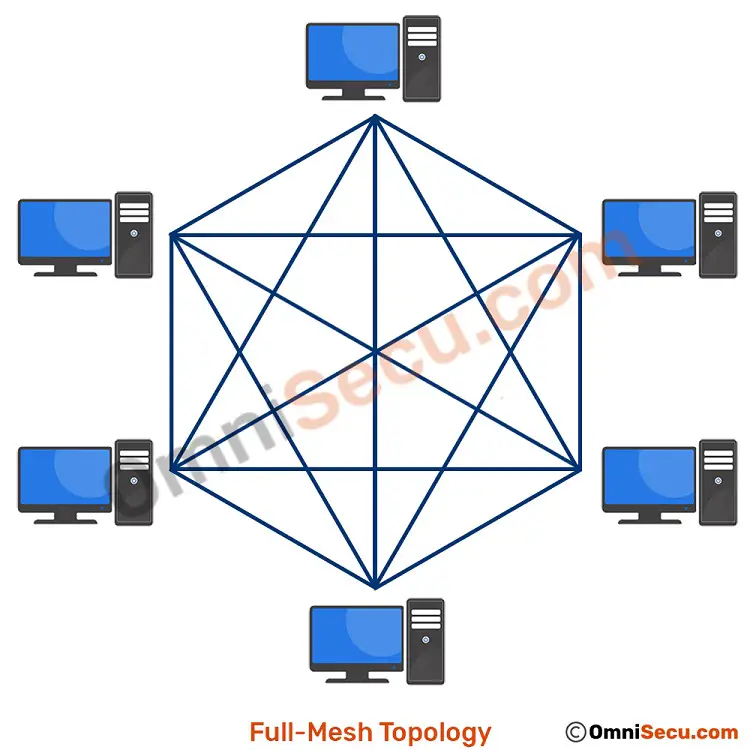Advantages and disadvantages of full-mesh topology in networking
In full-mesh topology, each device is connected to every other device in the network.

Advantages of full-mesh topology
• Since all devices are connected together, full-mesh toplogy has higher levels of redundancy. If one path is failed, there is always an alternative path.
• There are multiple paths available in full-mesh topology. Data can be transmitted simultaneously.
• Any maintenance work in network will not cause any disturbance for the devices in full-mesh topology.
Disadvantages of full-mesh topology
• Implementation cost of full-mesh topology is very high.
• As the number of devices in the network increases, the complexity of network will increase.